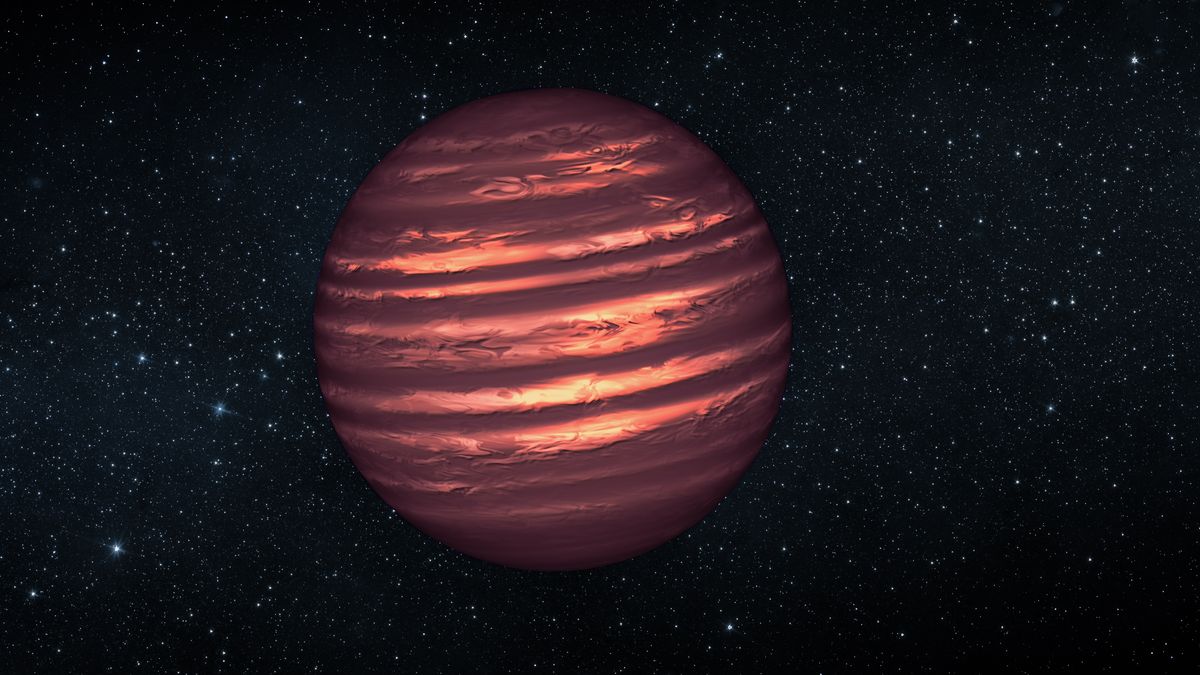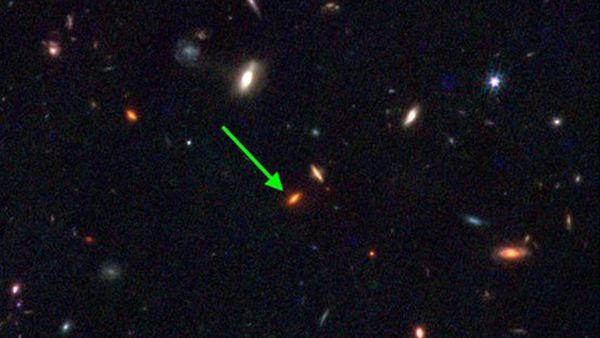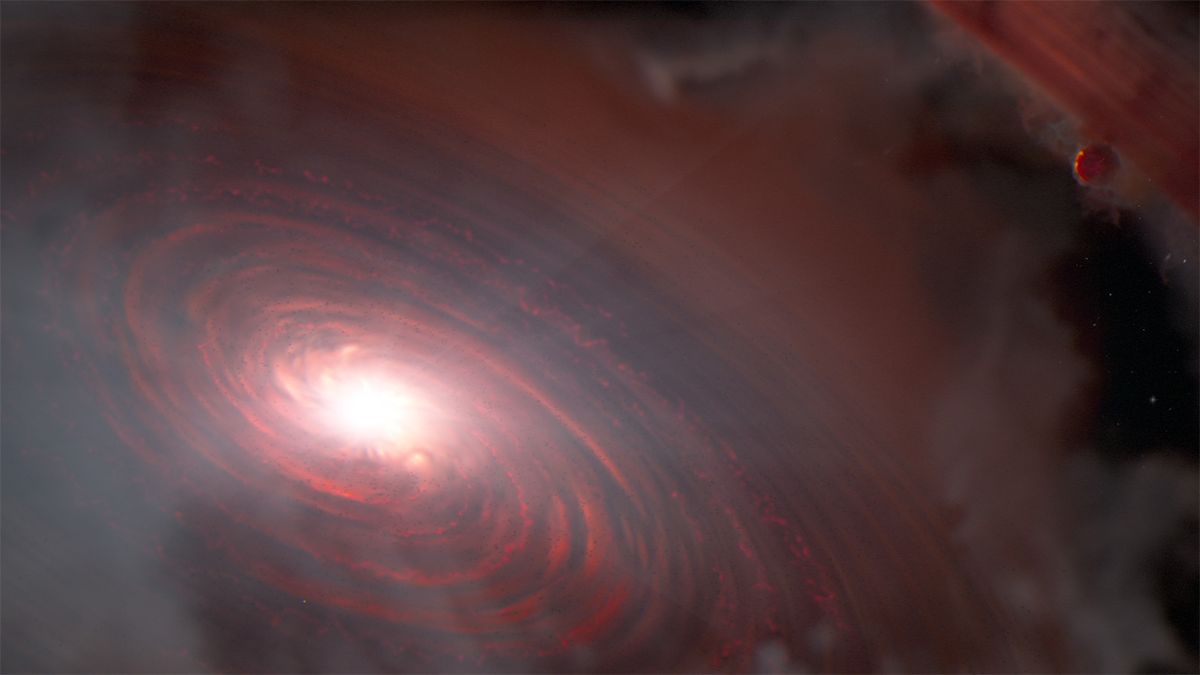The Orion Nebula may be a familiar and well-studied celestial object, but new images from the James Webb Space Telescope (JWST) show this star-forming cloud of gas and dust in an incredibly new and vibrant light. The Orion Nebula, also known as “Messier 42” (M42), is located around 1,500 light years from Earth toward the constellation of Orion. This makes it the closest large star-forming and stellar nursery to our solar system. Visible to the naked eye under dark skies, the Orion Nebula has been studied throughout human history, but…
Read MoreTag: James Webb Space Telescope
A failed star and an ammonia trail could reveal how some giant exoplanets form
Astronomers now have a way to figure out how gas-giant planets form, thanks to a discovery by the James Webb Space Telescope (JWST) of ammonia “isotopologues,” which are molecules that contain the same elements but with differing numbers of neutrons. The nucleus of an atom is made from a bunch of protons and neutrons, and while the number of protons within an element does not change — for example, carbon atoms always contain six protons and nitrogen atoms always have seven protons — the number of neutrons can vary. When…
Read MoreA new ultrablack coating for telescopes could bring more stars into focus
The images we get these days from advanced telescopes, such as the James Webb Space Telescope, undoubtedly leave us in awe and wonder of galaxies that exist light-years away from Earth. But what if these pictures could be improved even more?Researchers from the University of Shanghai for Science and Technology and the Chinese Academy of Sciences hope they’re able to help with just that through their development of a thin, ultrablack film coating for aerospace-grade magnesium alloys. Think about it this way — when you want to see the stars…
Read MoreJames Webb Space Telescope sees the infrared skeleton of a galaxy (image)
The James Webb Space Telescope’s infrared vision has transformed our view of a large, barred spiral galaxy, revealing its skeleton of dust illuminated by the glow of young stars. Visible-light images of NGC 1559, such as those taken by the Hubble Space Telescope, show a glowing whirlpool of light with bright, young star clusters scattered across spiral arms laced with lanes of black dust. The JWST has now peered past the glare, its infrared vision revealing the galaxy’s innards. The JWST’s Near-Infrared Camera (NIRCam) sees starlight filtered through the obscuring…
Read MoreJames Webb telescope finds ancient galaxy larger than our Milky Way, and it’s threatening to upend cosmology
The James Webb Space Telescope (JWST) has found a galaxy in the early universe that’s so massive, it shouldn’t exist, posing a “significant challenge” to the standard model of cosmology, according to the study authors. The galaxy, called ZF-UDS-7329, contains more stars than the Milky Way, despite having formed only 800 million years into the universe’s 13.8 billion-year life span. This means they were somehow born without dark matter seeding their formation, contrary to what the standard model of galaxy formation suggests. How this could have happened is unclear, but…
Read MoreJames Webb Space Telescope spies a newborn star in its cosmic crib (image)
Using the James Webb Space Telescope (JWST), astronomers have observed the luminous cloud of material that surrounds a newborn star, cocooning it in a crib of gas and dust. These so-called Herbig-Haro objects are created when stellar winds and jets of gas billow from newborn stars, causing shockwaves that slam into the gas and dust from which the star was born at high speeds. This particular Herbig-Haro object, which can be seen dominating the bottom half of this stunning new JWST image, captured with the telescope’s Near-InfraRed Camera (NIRCam) instrument,…
Read MoreExoplanet ‘haze’ makes it harder to identify water on alien worlds. Scientists may have a solution
One of the primary tasks of the James Webb Space Telescope (JWST) is to scan the atmospheres of exoplanets for signs of habitability. And, as far as we know, water is necessary for life. So naturally, detecting the presence of water in and around alien worlds is a high priority for planetary scientists. There is, however, one problem. Getting a clear, unfiltered view of what might be present in exoplanet atmospheres can be difficult due to the presence of something seemingly trivial — haze. It’s likely that organic hazes of…
Read MoreJames Webb Space Telescope detects clues about how Earth formed billions of years ago
The James Webb Space Telescope (JWST) has spied planet-forming disks letting off a cold “steam,” providing crucial evidence for a leading theory describing how planets are built. This excess water vapor was detected by the James Webb Space Telescope in two compact disks of gas and dust surrounding young stars that are just 2 million to 3 million years old — which is incredibly young in the scope of our universe’s timeline. The disks are located in the Taurus star-forming region, which sits about 430 light years away. Astronomers believe…
Read MoreJames Webb Space Telescope could soon solve mysteries of the Milky Way’s heart
Ever since astronomers first laid their eyes on the sparkling spiral arms of our home galaxy, the Milky Way, they have wondered what processes might drive the evolution of these massive, star-studded structures. Presumably, those same processes are why we see such a stunning diversity of galactic neighborhoods in the observable universe, which contains an estimated 2 trillion galaxies with unique sizes, shapes and compositions. So, in an effort to further our understanding of galactic evolution, over 100 astronomers from over 80 institutions around the world have called for the…
Read MoreThe James Webb Space Telescope’s tech breakthroughs are already impacting science. Here’s how
NASA’s mighty James Webb Space Telescope, (JWST)has no shortage of accomplishments to its credit. From its vantage point in space, roughly 1.5 million kilometers (1 million miles) away from Earth, the JWST has been snapping breathtaking images and generating insights about stars, planets and galaxies that were simply not possible by its predecessors. And back home, spinoff technologies the observatory left in the telescope’s wake are benefitting everyday life, like new types of LASIK tech helping to aid human eyes. The latest update on the matter concerns significant improvements to…
Read More


